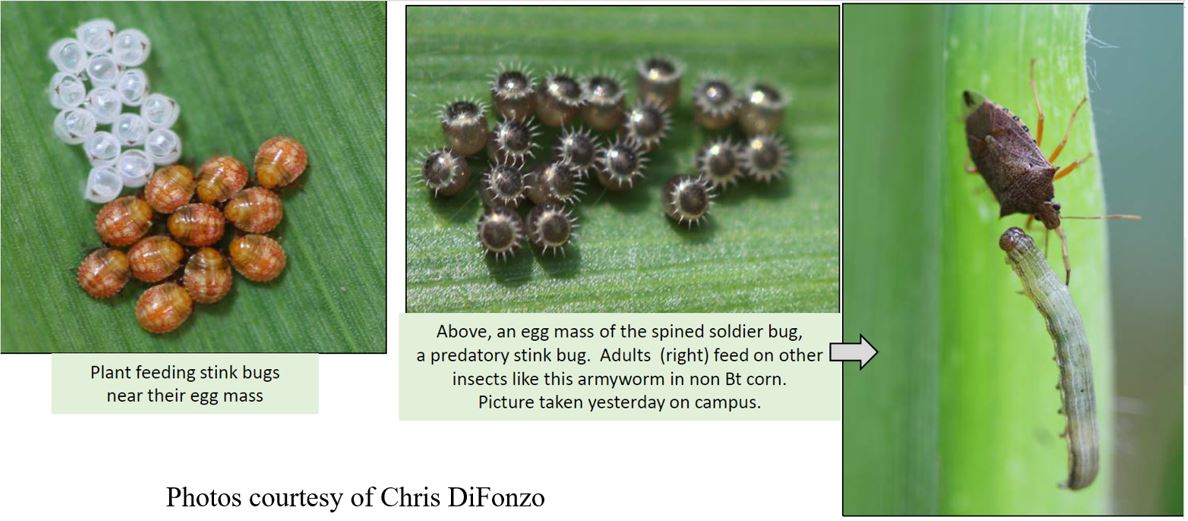Southwest Michigan field crop update – July 30, 2020
Hot and dry…have we heard that before? The southwest region is now being categorized as “abnormally dry,” and rainfed crops will continue to struggle with little precipitation in the coming week.

Weather
The warmer-than-normal trend for the summer continued this past week. Coupled with the dry conditions from this past week—and really the past month—these warm summer temperatures have taken their toll on crops in the region, and we are now currently under D0 (abnormally dry ) status according to the latest U.S. Drought Monitor. According to the latest precipitation forecast, this is not likely to improve in the coming week with only 0.50–0.75 inches of rain expected this next week.
The one bright spot in the forecast is for cooler-than-normal temperatures beginning next Monday, Aug 3, that are being set up by an unusually strong upper air trough that is forming over the Midwest. This will drive the weekly potential evapotranspiration rates down slightly (1.1 to 1.2 inches per week). These cool conditions are expected to extend through the first week of August. The 8-14 day outlook looks to reverse that with warmer and wetter conditions returning, but according to Michigan State University agricultural climatologist Jeff Andresen, the confidence level for that prediction is currently low.

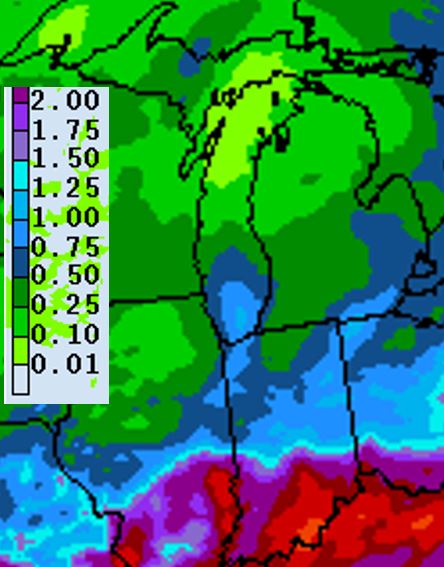
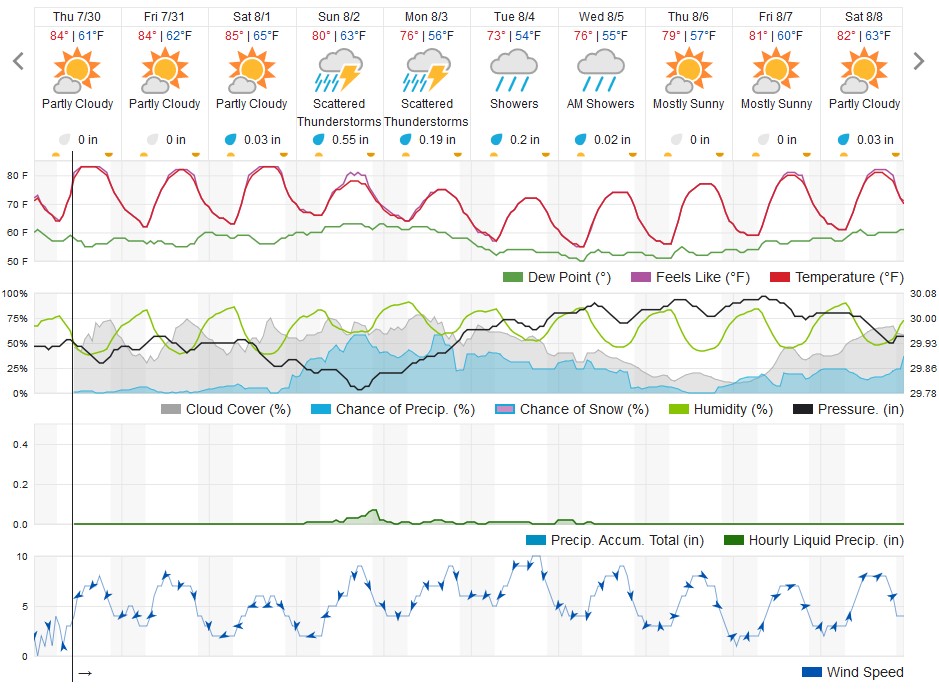
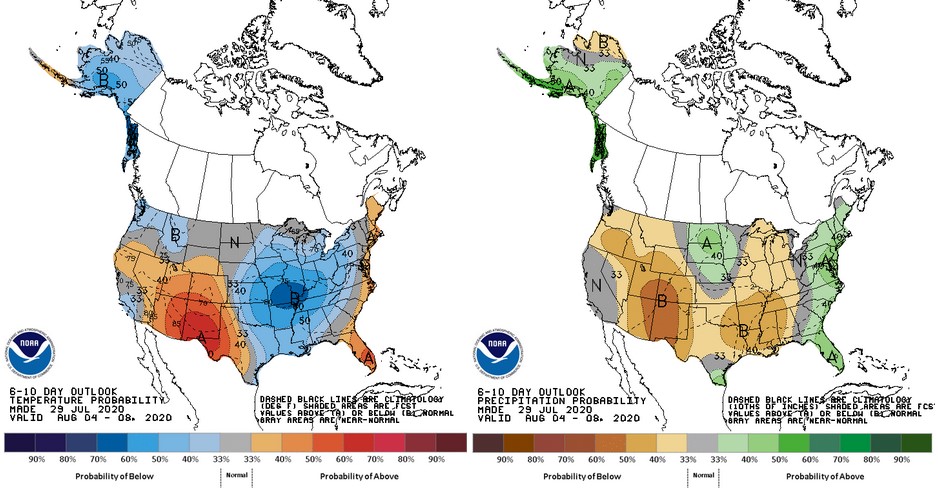
Crops
Silks are turning brown on early planted corn, signaling the end of pollination, while later planted fields have not yet tasseled. I have not seen signs yet of tar spot and I have not found western bean cutworm egg masses, hatched eggs or larvae in fields visited. See below for more on western bean cutworm from MSU Extension field crops entomologist Christina DiFonzo. Purdue University Extension entomologist Christian Krupke recorded a video describing western bean cutworm scouting and the difficulty of finding larvae after tasseling has begun.
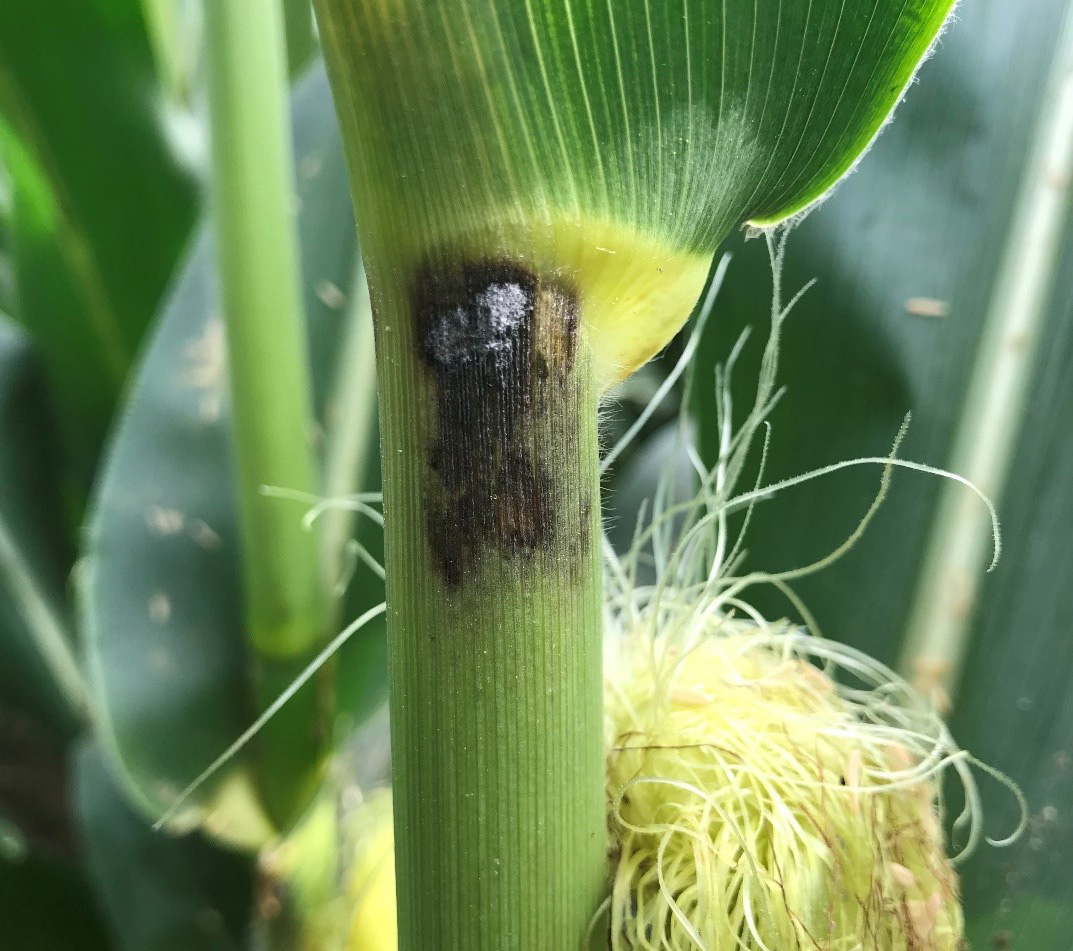
Early planted soybean fields are beginning pod formation with 0.25-inch pods forming toward the base of the plant. Officially, beginning pod stage (R3) is when pods 0.1875-inch long are found at the top four nodes in over half the field. Fields I have visited showed minimal signs of insect feeding from Japanese beetle, bean leaf beetle and grasshopper. Some leaf yellowing near the base of the plant was seen, likely due to Septoria leaf spot, but no other diseases were seen (fields were irrigated and planted at 15 inches and 30 inches).
Pests
Western bean cutworm trap counts ramped up in Indiana, Ontario and Michigan over the past two weeks. The graph below shows the combined catches from 24 Purdue University moth trap sites in the top three tiers of counties in Indiana.
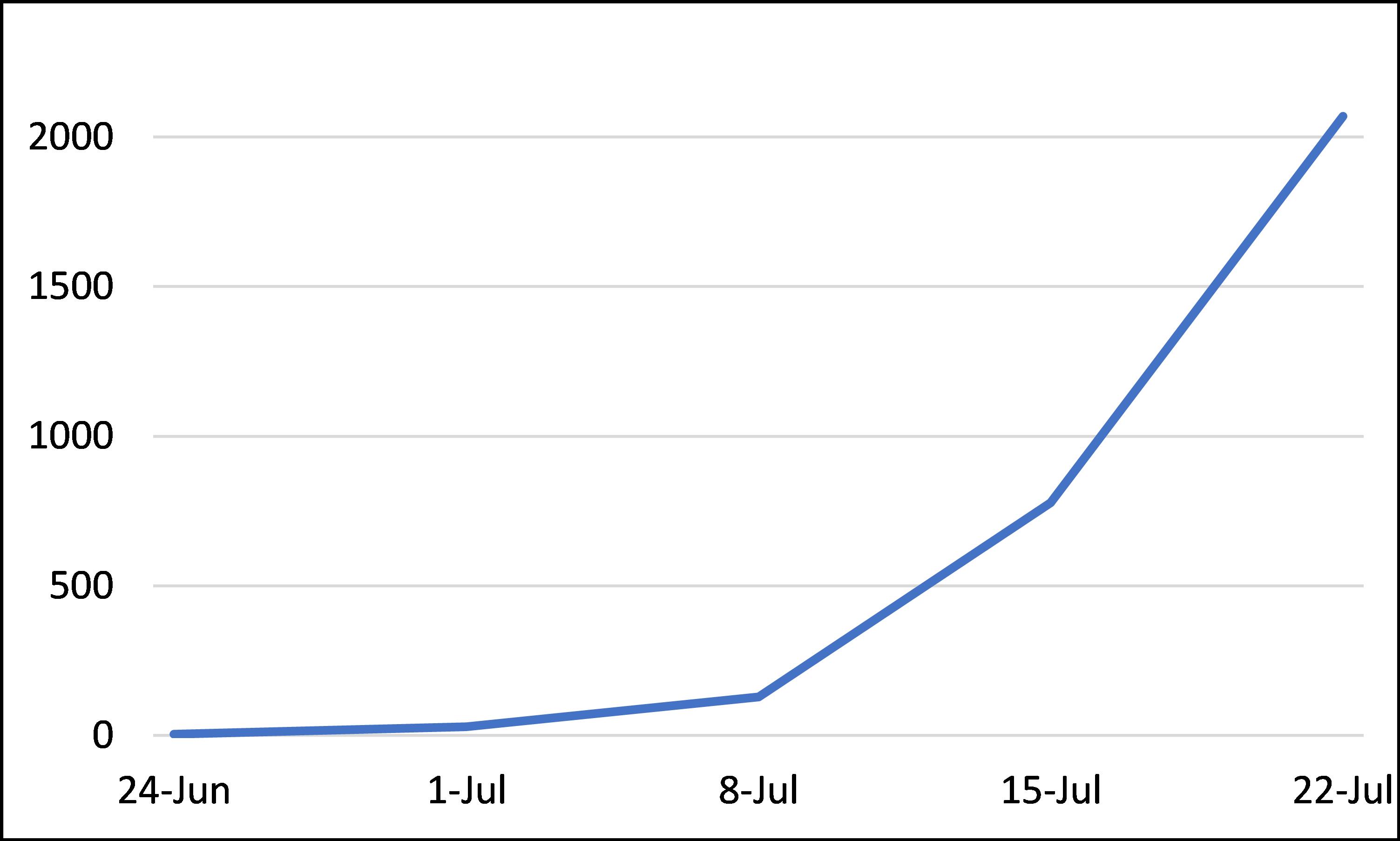
You can also see moth capture data from several locations in Michigan that are posted on the Great Lakes and Maritimes Pest Monitoring Network – see the screenshot below. After you select the Western Bean Cutworm tab, zoom in to your region to see the trapping sites. Grab the slider at the bottom of the screen to see trap counts at different points in time. If you are interested in contributing to this network this year or in the future, read through the information under the Adding Moth Counts tab.
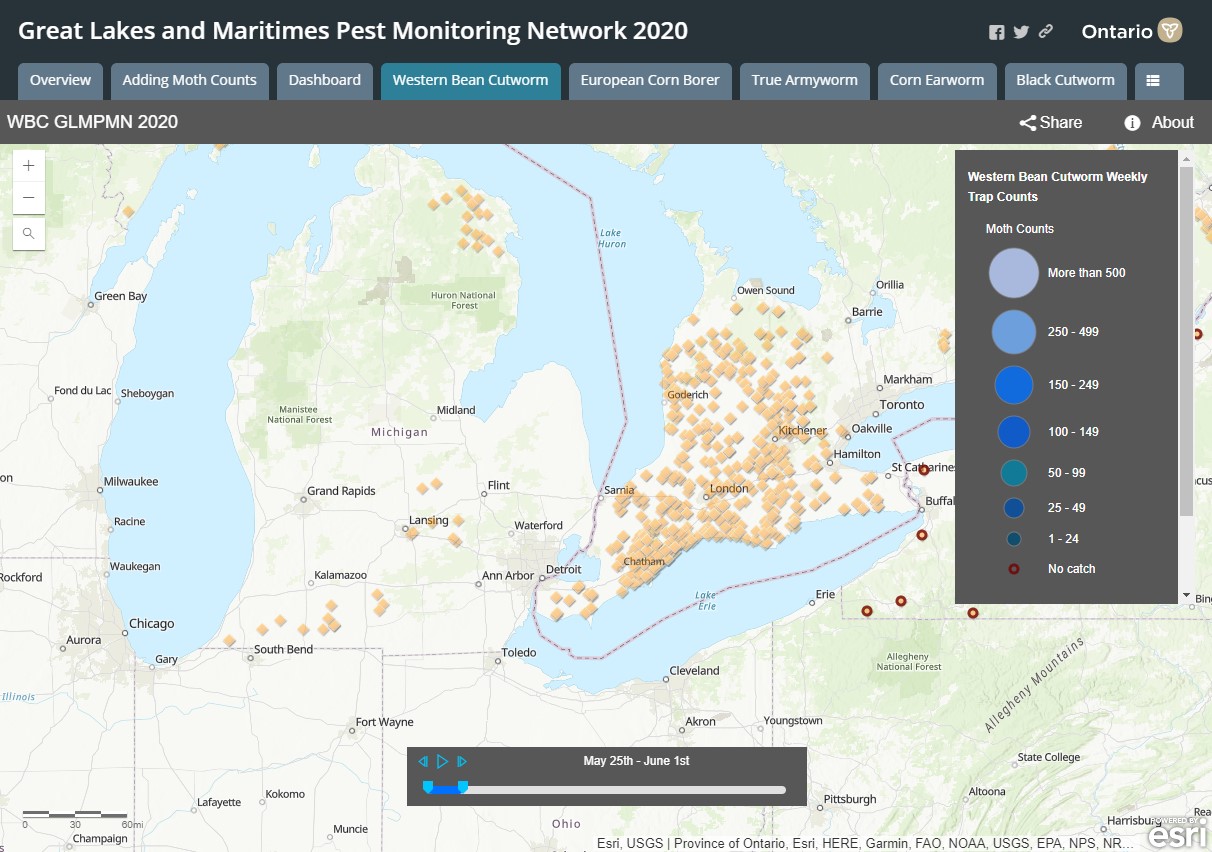
The following insect updates were sent out by DiFonzo on July 24.
Western bean cutworm flight is increasing. There have been unconfirmed reports of hundreds in traps in the Montcalm County area (a historic hot spot with favorable sandy soils). In a bucket on campus, there were six moths last week and 60 this week. Egg masses, fresh and hatching, were also reported. The corn is further ahead of normal, and many fields in southern and central Michigan are already past having a fresh tassel. These fields will rapidly become less attractive for egglaying. That means moths will seek out younger corn, and perhaps may accumulated in later-planted fields in your neighborhood. The threshold in corn is 5% of the plant with an egg mass. Remember that this threshold is cumulative, i.e., add the % infestation from last week to the next week’s %.
If the corn isn’t attractive anymore, females will switch over to dry beans in areas where they are grown. It’s impossible to find egg masses and small larvae in beans without making it your career. Instead, use a total trap catch over 120-150 as a cue that populations are high in your area. I also suggest walking nearby corn for egg masses. Then walk dry bean fields to look for pod feeding. The optimum timing for a spray in dry beans tends to be the first week of August (not too early or late). Here is a tip sheet for western bean cutworm in dry beans.
Regarding other caterpillars in corn, I saw both true armyworm and fall armyworm in corn fields on campus. Larvae were still small (third or fourth instar), not very numerous, and in a weedy section of a field. Non-Bt and organic fields do merit a walk-through to check for these species plus western bean cutworm and corn borer.
Western corn rootworm adults have emerged. They will feed on (scrape) leaf surfaces until the tastier tassels or silks emerge.
Several people asked about a tiny green bug that is in great numbers in some corn fields. It is the rice leaf bug, Trigonotylus caelestialium, a handsome and striking bug with a bright green body and pink antennae. This species prefers grasses, but I have seen it on hemp too. Nothing to worry about, its simply doing well this summer.
This is a banner year for grasshoppers. In corn and soybeans, hoppers are messy feeders and create ragged leaf damage. Hopper poo looks like small, brown dirt pellets (they often use the corn whorl as a litter box). The infestations that I’ve seen were in rows along the field edge, where the hoppers moved in from the ditch or roadside. The feeding petered out further into the field so spraying isn’t necessary.
Japanese beetle adults are feeding in corn and soy. Like grasshoppers, the beetles often congregate on edges near lawns, grassy roadsides and ditches, where the grubs probably developed. Groups of mating beetles will defoliate a section of beans or clip the silks of a few corn plants but feeding usually drops quickly further into the field.
Several people sent me pictures of mystery egg masses, sometimes with tiny insects gathered around. These are stink bugs. The eggs are distinctly barrel shaped and some types have a spiky crown. Hatch is synchronized; the colorful little bugs stay by the egg mass for a bit before dispersing over the plant. Most of the plant-feeding stink bugs I’ve collected in corn and beans are the brown, “one-spotted” stink bug. One-spotted adults move out of wheat as it dries down, into corn and soy where they lay eggs. If you see a mass of stink eggs, which are extremely spikey, this could be Podisus maculiventris, the spined soldier bug. This is a voracious predatory stink bug that attacks other insects, including pest caterpillars in corn.
I’ve seen many other defoliators in soybean besides hoppers and Japanese beetles. Bean leaf beetles are plentiful in some fields, chewing the small round holes. Thistle caterpillars and leafrollers are both present, feeding from webbed shelters on leaves. The threshold for defoliation in beans is quite high, 20% of the canopy. Typical defoliation levels in Michigan soybean fields run less the 1%.
I can’t stress enough the importance of sampling alfalfa and dry beans for potato leafhopper. Don’t wait until you see yellowing! This is one instance where damaged has already occurred, and spraying will probably pay. My last Fonz Facts, sent July 6, discussed leafhopper sampling and thresholds.
Water usage and irrigation
The most critical time for crops is during flowering—flowering (R1-R2) in soybean and tasseling (VT) and the three weeks thereafter for corn. With the water stress that our crops are under this summer, those who have the ability to irrigate are thankful right now for that ability. MSU and Purdue irrigation educator Lyndon Kelley wrote an article, “July/August corn water needs,” to discuss this crucial time. The following is a snippet from that article.
Irrigated corn has its highest water use and realizes its greatest potential benefit from irrigation during the week of tasseling and the following three weeks. Most irrigation scheduling programs have corn using 115-120% of a 6-inch grass reference evapotranspiration (ET0), which translates to a water need for as much as 2 inches per week in cornfields in the peak water use stages.
Supplying adequate water during the week before and three weeks after tasseling is critical to obtain top corn yields. This period often occurs during the dry point in the summer when rainfall rarely meets crop water needs. In early and late summer, producers can save irrigation water and energy by using rainfall and “stored” soil moisture as much as possible. Irrigators striving for water and energy saving will let the crop deplete the available soil moisture to almost 50%, the point at which corn leaves will start to roll on a hot afternoon. During the critical week before and three weeks after tassel emergence, maintaining higher soil moisture reduces yield risk and maximizes water use efficiency. Although using a lower daily water use (100% of ET0), corn at beginning dent stage through full dent needs adequate water to avoid light test weight grains.



 Print
Print Email
Email